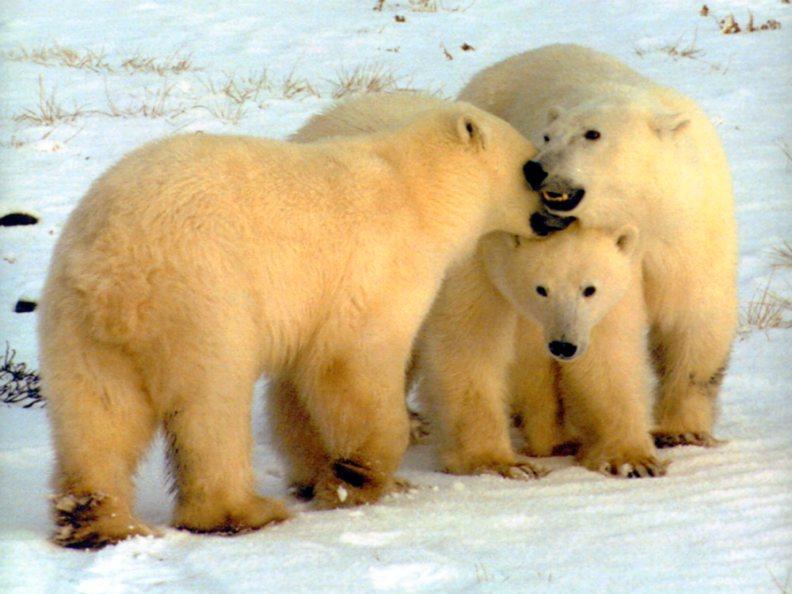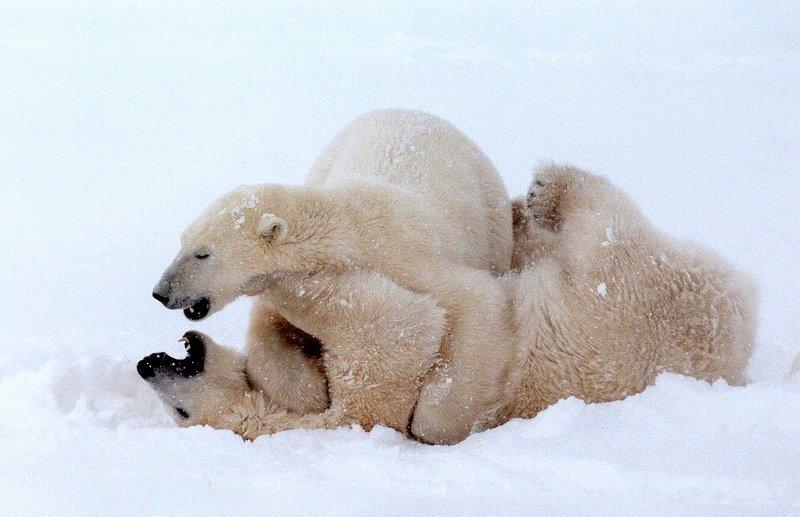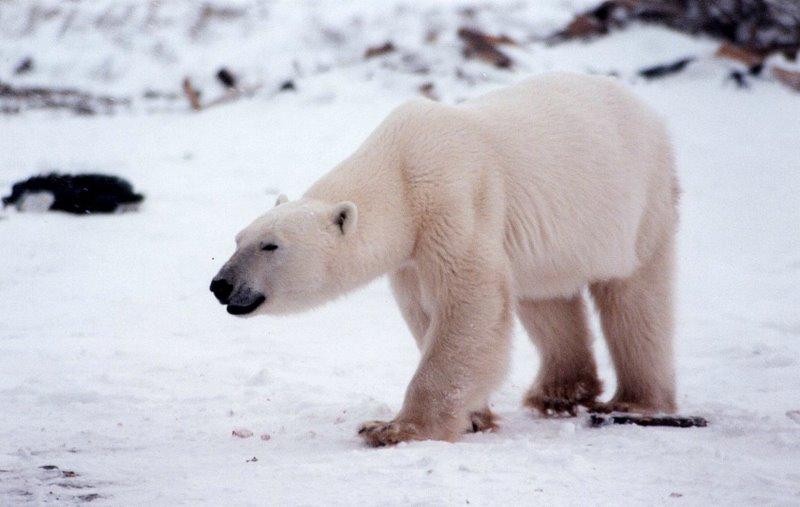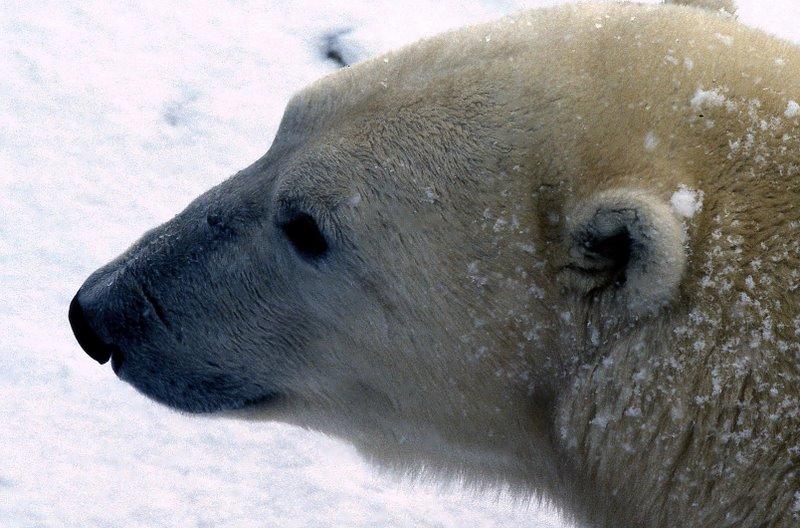Wildlife North America . com North American Animals - mamals, birds, reptiles, insects |
Polar Bear (Ursus maritimus)
Mother Polar Bear with her two large cubs. The cubs stay with the adult for the first two years to learn how to survive in the harsh climate. These two must be about ready to move out on their own. Photograph by Len Haier. Some rights reserved. (view image details) 
Polar Bears in their element Photograph by Len Haier. Some rights reserved. (view image details) 
The neck of the Polar Bear is longer than neck of Brown Bear and Black Bear. Photograph by Len Haier. Some rights reserved. (view image details) 
Close up of Polar Bear head. Photograph by Len Haier. Some rights reserved. (view image details)
POLAR BEAR FACTS
DescriptionThe Polar Bear has a large and stocky body, and relatively longer neck and smaller head than Brown Bears and Black Bears. The fur is white or yellowish. Sometimes the coat can appear pale brown or pale grey. (When examined closely the fur is actually transparent - the white appearance is from light scattered from the clear strands). The skin is black. The paws are large and help with swimming. The soles of the feet are furry to provide insulation from the cold ice, and to provide better grip. Polar bears walk flat footed with a shuffling gait. Other Names White Bear, Ice Bear, Nanuk Size Length: males 2.3m - 2.6m; females 1.9m - 2.1m. Height up to 1.6m at shoulder. Weight: males 400 - 600kg females 175 - 300kg Environment pack ice of the Arctic Ocean. They hunt near the ice. Polar Bears travel hundreds of kilometers to stay on pack ice as the ice melts and freezes Food mainly Ringed Seals, also eat Bearded Seals, Harp Seals, Walruses, Beluga, Narwhals, sea birds and eggs, and some plant matter. Breeding Females dig a den in the snow. She gives birth to 1 - 4 cubs (average litter is two) in the den around December while she is hibernating. She nurses her cubs during hibernation until they are ready to leave the den by March or April. The cubs are independent at about two and a half years old. Range throughout the arctic region surrounding the North Pole Notes One way to see these magificent creatures in the wild is to go on a Polar Bear tour from Churchill, Manitoba, Canada. Conservation Status The conservation status in the 2004 IUCN Red List of Threatened Animals is "vulnerable". Classification
Relatives in same Genus American Black Bear (U. americanus) Brown Bear (U. arctos) Home | Mammals | Reptiles | Birds | Insects | Privacy Policy | Disclaimer | Contact Us |